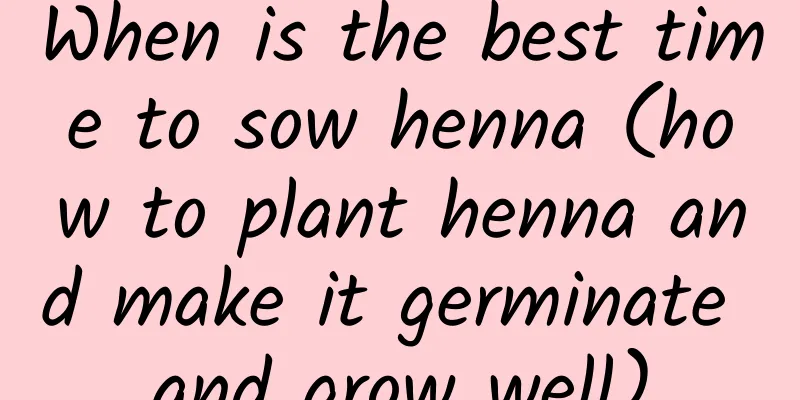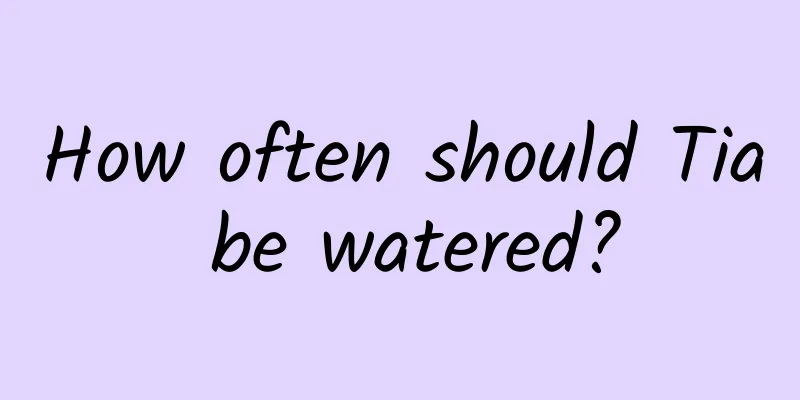When is the best time to sow henna (how to plant henna and make it germinate and grow well)

|
Henna is very common in rural areas and is very easy to grow. Henna can propagate on its own. Ground-planted henna does not need to be planted at all. It will grow a large patch every year. If it is a potted plant, it needs to be sown in spring. When is the best time to sow henna?Henna is usually sown in spring from March to May and blooms in summer . The sowing time depends on the local temperature. Generally, it can be sown when the daytime temperature is above 15 degrees. Now is the time to sow. How to sow henna so that it grows well and blooms moreFirst you need seeds, you can collect them yourself or buy them. It is recommended to collect them yourself, there are many henna seeds, you can find them everywhere in autumn. When collecting seeds, pay attention to the time. Collect them when the seed pods turn slightly yellow. If you collect them too late, the seeds will automatically bounce away. The seeds of henna are like this. There are many in a seed pod of centimeters. The seeds collected in autumn need to be stored until next spring when they are sown. The place where the seeds are stored should be cool and dry. If it is too humid, the seeds will mold. In areas with a relatively humid climate, they can be placed in cloth bags, which can absorb some moisture. Sowing is very simple. Just sprinkle the seeds in the flowerpot, cover them with a layer of soil or rake them a few times to let the seeds sink into the soil. Then water them once and they will generally germinate in about a week. Management and maintenance of henna after sowingAfter sowing, just place it directly under the sun without special sun protection. The seedlings grown in the sun will be stronger. If there is no sun, the henna seedlings will grow thin and long. Keep the soil moist before the seedlings emerge, and water it when the soil is dry. When the seedlings grow to a certain size, they can be thinned out appropriately, leaving only 2-3 plants in a pot. Too many will make it crowded. If you want the henna to bloom more, you need to pinch the tops several times. Pinch the tops when the seedlings are about 10 cm tall , and pinch them again after the side branches grow out. This will allow more side branches to grow, and more flowers will bloom when they bloom. Henna has strong adaptability and is relatively easy to manage. It is drought-resistant and resistant to barrenness. Just water it when the soil is dry and fertilize it once every half a month. It does not need shade in the summer. |
>>: How to grow the green radish to be lush and leafy (tips on how to make the green radish bloom)
Recommend
A complete guide to propagate Globe amaranth!
Seed propagation Seeding is the most commonly use...
Can I water the Begonia when it is blooming?
Watering Begonia Flowering Begonia can be watered...
How to grow Dendrobium candidum at home
Dendrobium officinale growth conditions Dendrobiu...
8518 How many years does it take for walnuts to bear fruit
Introduction to planting 8518 walnuts The 8518 wa...
Can basil be planted all year round? How many times can it be planted in a year?
The main producing areas of ercai are Sichuan, Ch...
How to propagate rosemary by cuttings
Rosemary can be propagated by cuttings, but rosem...
How to plant and manage wolfberry trees?
Wolfberry tree, as a plant that has both medicina...
Can green radish survive the winter? How to survive the winter (temperature and maintenance)
1. Can it survive the winter? If it is well cared...
The meaning and symbol of baby's breath
1. Really like it Gypsophila paniculata is a very...
Disease and Pest Control of Alsophila spinulosa
Disease control after transplanting Under natural...
High-yield planting technology of edamame
Edamame is actually young soybeans . It is named ...
How to deal with a succulent head explosion
1. Repotting Generally speaking, the original pot...
How often should the mini fortune tree be watered?
1. Spring and Autumn The mini money tree has stro...
How to make hydrangea bloom during the Spring Festival
In order to make hydrangea bloom around the Sprin...
How big can a lotus leaf be divided? What should I do if the leaves turn yellow?
1. How big should the lotus be before it can be d...









